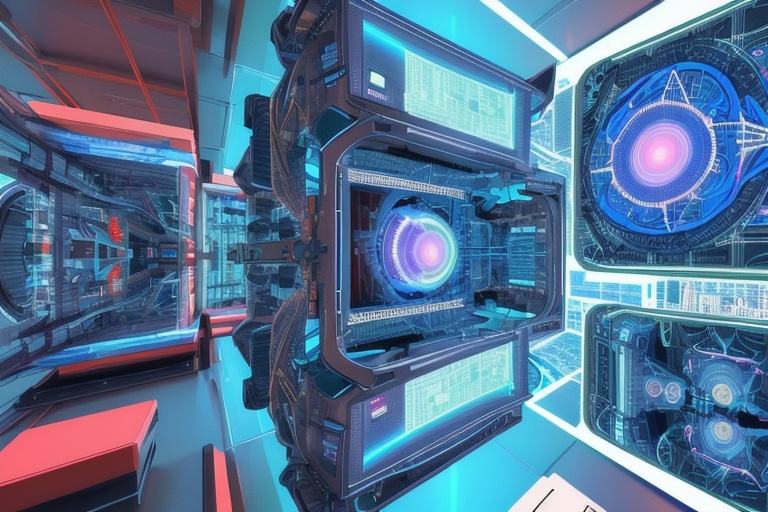Artificial Intelligence (AI) has remarkably transitioned from a futuristic concept to an integral part of our daily lives. The implementation of this technology reaches into every corner of society, from the way we navigate through traffic with autonomous driving to the methods used to prevent crime. The influence of AI can streamline, enhance, and potentially revolutionize diverse sectors, including healthcare, education, and environmental conservation. With such transformative capabilities at hand, AI stands as a beacon of progress. However, it's imperative to use this powerful tool responsibly, considering the ethical implications and striving towards a positive impact on society.
Artificial Intelligence (AI) has remarkably transitioned from a futuristic concept to an integral part of our daily lives. The implementation of this technology reaches into every corner of society, from the way we navigate through traffic with autonomous driving to the methods used to prevent crime. The influence of AI can streamline, enhance, and potentially revolutionize diverse sectors, including healthcare, education, and environmental conservation. With such transformative capabilities at hand, AI stands as a beacon of progress. However, it's imperative to use this powerful tool responsibly, considering the ethical implications and striving towards a positive impact on society.
The United Nations and AI for Good
In acknowledgment of AI's impressive potential, the AI for Good initiative was conceived by the United Nations International Telecommunication Union (ITU). This global venture is not merely a forum for discussion; it's a call to action. The initiative champions the cause of advocating timely change and curbing inaction, positioning AI as a pivotal ally in the pursuit of sustainable development. AI's aptitude for processing sprawling datasets and extracting meaningful patterns can prove indispensable in enhancing decision-making in critical areas like healthcare access, educational resources, and promoting gender equity.
AI's influence is felt across a vast array of challenges, notably including complex issues like climate change and poverty eradication. The initiative aligns its goals with those outlined in the 17 United Nations Sustainable Development Goals (SDGs), which are designed as a global roadmap towards a brighter future by 2030. The AI for Good movement highlights AI's ability to deliver positive outcomes across 135 targets within these goals, epitomizing the technology's potential to drive significant advancements.
Cultural Context and Regional Prioritization
An essential facet of deploying AI for good is the thoughtful consideration of cultural contexts. What is beneficial in one community may not have a similar impact in another. Diverse perspectives must be acknowledged to ensure that AI solutions are appropriate and effective for the issues they are intended to address. This sensitivity to regional specificities is crucial in making sure AI's deployment truly benefits its intended beneficiaries, enhancing its role as a force for good.
Emphasis on Practical Applications
AI for Good emphatically concentrates on pragmatic, tangible applications of AI that are ripe for immediate deployment. The pressing nature of global challenges leaves no room for delay; we must act swiftly, circumventing hypothetical discussions in favor of concrete, actionable AI-driven solutions. These advanced practical applications enable organizations and governments to distill insights from vast amounts of data, grounding their decisions in solid facts and accelerating their responses.
Ethical Considerations in AI Development
While the promise that AI holds for positive change is boundless, responsible development and deployment cannot be overstated. AI's ascension in societal roles necessitates an unwavering commitment to ethical principles—transparency, fairness, and accountability must be the foundation upon which AI operates to ensure equitable benefits for all.
As AI systems become increasingly autonomous and influential, ensuring they perform as intended without causing unforeseen harm is a duty that technologists, policymakers, and stakeholders must embrace cooperatively. Public trust in AI hinges on the technology meeting the highest ethical standards, and it is incumbent upon all participants in the AI sphere to steward this trust conscientiously.
Collaboration and Understanding
In our collective march towards sustainable and inclusive prosperity, AI stands out as a potential game-changer. It's a catalyst capable of generating deep insights, spurring innovative solutions, and championing rapid progress towards the global agenda set by the SDGs. Nevertheless, it's crucial to acknowledge the role of human agency in this equation. AI is a tool, and like any tool, its effectiveness is contingent on the hands that wield it.
A symbiotic relationship between technology, collaborative action, supportive policy frameworks, and nuanced comprehension of complex, context-specific challenges is imperative. To fully harness AI's potential for good, every stakeholder from technologists to end-users has to stay engaged in a collective effort.
Future Outlook and Collective Responsibility
The journey towards leveraging AI for the greater good is one of optimism and promise. AI empowers us to step up to the formidable challenges we face, catalyzing positive change and fostering hope for a brighter global future. As we advance, it's a shared responsibility to direct AI's evolution in a manner that is not only responsible and ethically sound but also inclusive, ensuring that no one is left behind.
In conclusion, the power of AI to transform our world for the better is an opportunity of our time. However, it must be matched with the sober recognition that careful governance, ethical considerations, and inclusion should guide its advancement. By drawing together our collective intellect and purpose towards responsibly leveraging AI, the potential it carries can transcend beyond the technological realm, leaving a lasting, positive legacy for generations to come.
Information for this article was gathered from the following source.


